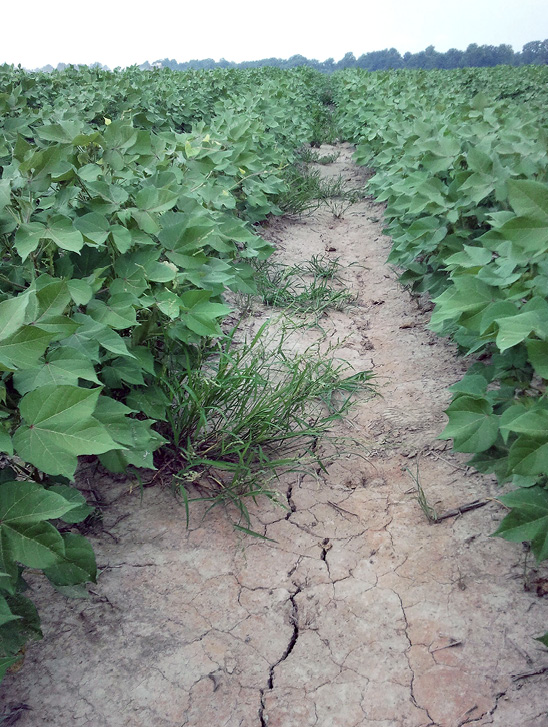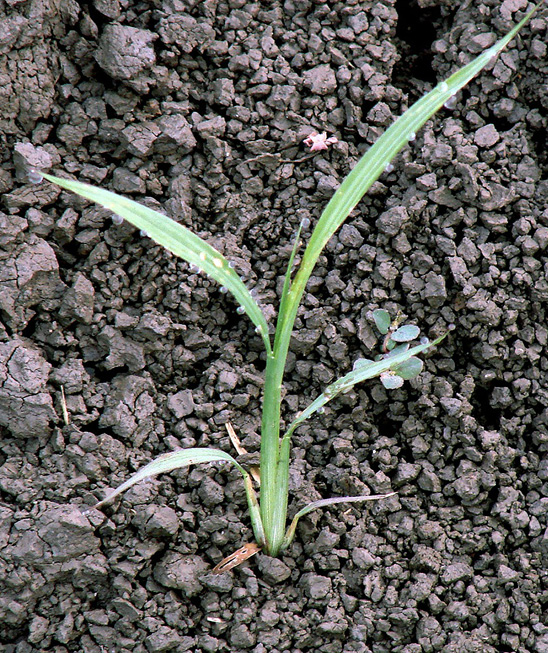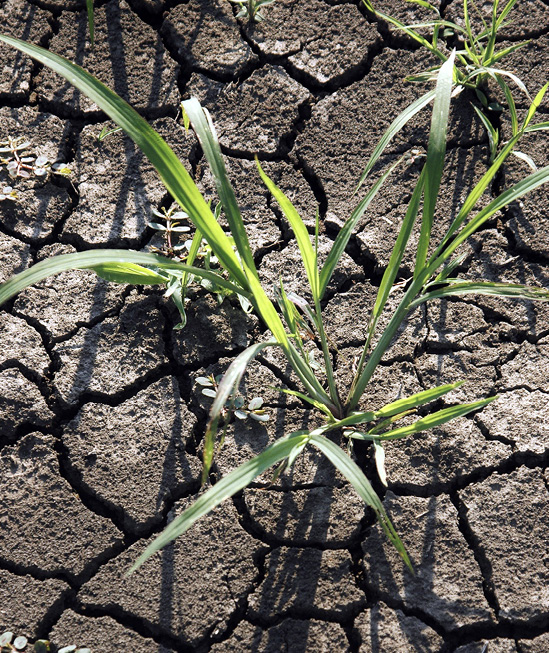Identification and Management of Glyphosate-Resistant Barnyardgrass in Mississippi Cotton and Soybeans

Introduction
Barnyardgrass (Echinochloa crus-galli), a warm-season annual grass commonly found in 36 crops worldwide (Mitich 1990), is a weed pest in 42 countries and is found in at least 27 other countries (Holm et al. 1977). Although barnyardgrass is the world’s principle weed of rice, it is not uncommon for it to be a problem in many Midsouth row crops, including corn, cotton, soybeans, and others. In a recent survey, this grass species was listed as one of the most common and troublesome weeds found in Midsouth cotton and soybean production areas (Figure 1) (Van Wychen 2019). Its prolific seed production, seed dormancy, extended emergence, and ability to grow rapidly allows the plant to withstand various environmental conditions and develop resistance to multiple herbicide groups (Mitich 1990).
Biology Characteristics and Identification
Barnyardgrass is a member of the Poaceae or grass family. Reproducing through seed, it is not uncommon for plants to reach over 3 feet in height when left uncontrolled. Seedling characteristics include glabrous seeds, leaves, and leaf sheaths. Leaves are linear and lanceolate, ranging from 4 to 20 inches in length, and they lack pubescence (hairs). Small amounts of short hairs may be present at the leaf base. Leaf sheaths are often tinted red or maroon. A distinguishing feature from other grass weeds is the absence of a ligule and auricles in both seedling and mature plants. Plants possess a fibrous root system with an erect flat stem often found growing in clumps. Mature barnyardgrass produces a dense inflorescence with branched panicles. Panicles range from green to purple with multiple individual spikelets, which are ovate and pointed in shape and may be awned or awnless (Bryson and DeFelice 2009).
Barnyardgrass, a C4 plant, has a more efficient photosynthetic pathway than cotton, soybean, and other C3 plants (Norsworthy et al. 2022). This important characteristic is a disadvantage to commercially grown C3 crops, allowing for barnyardgrass to be more productive in hot and drought-like conditions (Norsworthy et al. 2022). This allows the pest to outcompete surrounding plants, as well as other grassy weeds. Barnyardgrass is often observed in moist to wet soils; however, with this adaptation, successful growth can occur elsewhere (Mitich 1990).


Preventive and Cultural Control
Seed transferred from field to field can occur through contaminated seed sources, irrigation and runoff, and dispersal (Norsworthy et al. 2022). While these mechanisms of dispersal are often harder to control, growers can utilize multiple control practices to limit increases in the soil seed bank. Taking advantage of simple management considerations such as row spacing, can reduce weed growth. Barnyardgrass is affected by shading; therefore, good crop vigor establishment and adequate row spacing can aid in weed management (Mitich 1990). Crop rotation and the use of smother crops are also effective management practices. When appropriate, tillage can be a useful tactic (Norsworthy et al 2022).
Herbicide Resistance in Mississippi
A large percentage of Mississippi’s cotton and soybean herbicide programs for barnyardgrass and other common grasses are glyphosate based. To date, barnyardgrass in Mississippi has been confirmed to be resistant to simazine, cyhalofop, fenoxaprop, bispyribac-sodium, imazamox, imazetheapyr, penoxsulam, quinclorac, propanil, and glyphosate (Bond et al. 2022). This widespread resistance has made control methods difficult and even more limited with the lack of new herbicides coming to market. However, for glyphosate-resistant barnyardgrass less than 6 inches tall, Weed Management Suggestions for Mississippi Row Crops recommends multiple herbicides for control in cotton and soybeans (Bond et al. 2022) (Table 1).
Add nonionic surfactant at 0.25% v/v or crop oil concentrate at 1% v/v if applying alone with a glyphosate formulation not preloaded with an adjuvant.
|
Herbicide |
Treatment |
Instructions |
|
Clethodim |
0.07 to 0.125 lb ai/A |
Postemergence to grass 2 to 6 inches tall |
|
Fusilade® DX |
8 oz/A |
Postemergence to grass less than 5 inches with fewer than six leaves |
|
Quizalofo |
0.048 to 0.055 lb ai/A |
Postemergence to grass 2 to 6 inches tall |
|
Sethoxydim |
0.188 lb ai/A |
Postemergence to grass less than 6 inches tall |
References
Bagavathiannan, M. V., J. K. Norsworthy, K.,L. Smith, and P. Neve. (2012) Seed production of barnyardgrass (Echinochloa crus-galli) in response to time of emergence in cotton and rice. Journal of Agricultural Sci. 150: 171-724
Bond, J. A., T. Barapour, D. Dodds, T. J. Irby, E. J. Larson, B. Pieralisi, D. B. Reynolds, and B. Zurweller. 2022. Weed Management Suggestions for Mississippi Row Crops. Mississippi State University Extension Service. Publication 3171.
Bryson, C. T., and M.S. DeFelice (eds.). (2009). Weeds of the South. University of Georgia Press. Mitich, L. W. (1990) Barnyardgrass. Weed Technol. 4:918-920
Norsworthy, J. K., J. Bond, T. L. Barber, and R. C. Scott. Identification, Biology, and Control of Barnyardgrass in Arkansas Rice. (2022) University of Arkansas Division of Agriculture Research and Extension. Publication FSA2175.
Van Wichern L. (2019). 2019 Survey of the Most Common and Troublesome Weeds in Broadleaf Crops, Fruits, and Vegetables in the United States and Canada. Weed Science Society of America Nation Weed Survey Dataset.
Van Wychen L. (2016). 2016 Survey of the Most Common and Troublesome Weeds in Broadleaf Crops, Fruits, and Vegetables in the United States and Canada. Weed Science Society of America Nation Weed Survey Dataset.
The information given here is for educational purposes only. References to commercial products, trade names, or suppliers are made with the understanding that no endorsement is implied and that no discrimination against other products or suppliers is intended.
Publication 3917 (POD-06-23)
By Seth Permenter, Extension Associate I, Delta Research and Extension Center; Whitney Crow, PhD, Assistant Professor, Biochemistry, Molecular Biology, Entomology, and Plant Pathology; and Cori Speights, PhD, Extension Associate I, Biochemistry, Molecular Biology, Entomology, and Plant Pathology. Photos taken by Trent Irby, MSU Extension Soybean Specialist.
The Mississippi State University Extension Service is working to ensure all web content is accessible to all users. If you need assistance accessing any of our content, please email the webteam or call 662-325-2262.






